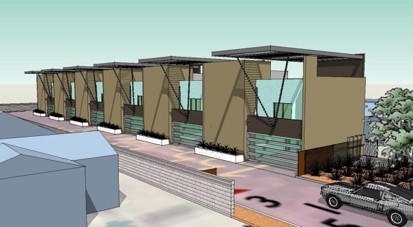*a work in progress*
I’m stating the obvious I know, but this has been a really difficult few years for the practice of architecture. Thankfully, things have really stabilized and thanks to that I have had a chance now to sit back and review past successes and failures. And the New Year presents an opportunity to pen these as a guide for future practice.
The project successes have been amazing – the whole reason I started the practice to begin with. There have also been a number of misfires, and they have been directly attributable to breaking my own rules. Rules that, prior to a global economic meltdown, seemed effortless and ingrained thanks to previous mentors who had already been through a downturn. Somehow though, (because of the lack of good jobs, because of the failed economy, because I had a house payment due) I was able to rationalize that it was OK to bend the rules temporarily, with a promise to return to normal later. Not following these rules has been the main reason for my stresses these last few years, and in the end it really had nothing to do with the outside forces like I had originally rationalized. I caused my own stress. Go figure.
So here they are. They are intended here as a guideline for me, but they have value here to future clients, too.
1-Love is a Requirement
No more superficial projects. No more degrading projects. Ever. Every new project, regardless of size, needs to have an end goal to be a source of pride; for me, for the rest of the design team, for the client, for the community. Life is too short to accept anything less.
2-Equivalent Expectations
As an architect, I am expected to know all the adopted building codes, new model energy codes, all the latest building materials (tested or not), and be current on all my continuing education requirements. In addition, I am expected to have all the latest technology (BIM, drafting, graphic, analysis and otherwise) and hardware to run it completely under control. OK – I accept. As a client, I now have basic expectations of you, or I can’t accept your project. Good clients:
- Understand their own businesses/homes, and make conservative decisions based on that understanding that they share with the design team as project goals.
- Have a building program that identifies required spaces and square footages. If they don’t, we will create one as the first phase of work as a requirement before proceeding to any design work. No more shortcuts. Period.
- Share their budgets. OK this maybe should be #1. This is the single biggest reason for recent project crashes. If you honestly don’t know your budget, we’ll help you figure it out as a work product, because you need to know it immediately so the designer can make informed decisions. If you already know it, and decide you just don’t want to share it, keep walking…
- Have funding that matches their budget. I’m tired of being cast in the role of “banker”.
3-Hard work is required, but Talent is King
I come from a blue collar steel town, and I’ve been working my guts out since I was 15. I routinely work more hours on a project than original projections. When #1 above is satisfied, it doesn’t feel like work. But here’s the dirty little secret – project inspirations can (and usually do) come in flurry and explosion of visions and sudden understandings. These flashes, of course, have their origins in the years and years of background training and education. The project needs to be set up to allow that flash of inspiration to guide the whole team to a successful conclusion, and the team needs to allow that spark to be the guide and follow it. If it isn’t followed, the project will fail. Great architecture is like great songwriting – inspiration is a required ingredient. If you don’t care about this, you probably don’t really care about #1 either.
